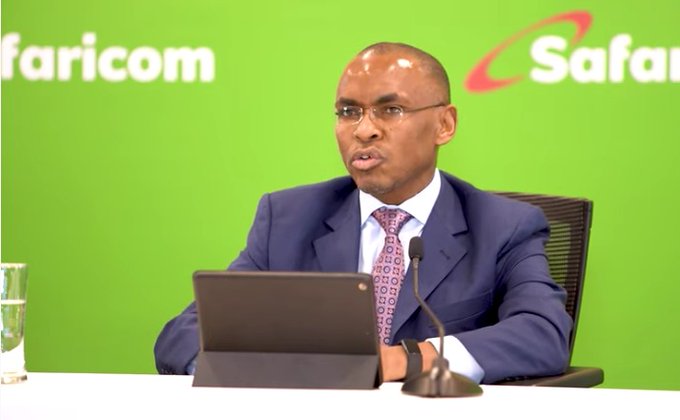
Recently, Pwani Oil announced that it has closed down its manufacturing plant in Mombasa blaming it on insufficient dollars in the country which is making it hard for them to import raw materials.
Depreciation of the Kenyan shilling has continued to raise concerns among importers and businesspeople who are experiencing first-hand the pain of a dollar shortage that has seen them part with up to Ksh120 per dollar against the quoted rate of Ksh116.

The Kenya Association of Manufacturers on May 30 expressed worries over the dollar shortage, claiming members, who mainly rely on imported raw materials, cannot access dollars at the official market rates.
The rising inflation has raised the cost of living, and the depreciating currency is only exacerbating the pain as manufacturers complain of rising production costs due to the persistent dollar shortage.
So, what is really causing all these?
Popular Economist has taken time to explain this occurrence to Kenyans.
On the strength of a currency, Ndii said: “The strenght of a currency is its purchasing power, which has nothing to do with the units of measurement. If we adopted a new Ksh at Sh100 old for Sh1 new, new shilling will trade 1 to 1 with the USD, but your old Sh10k in the bank and new Sh100 would both exchange for $100.”
Strength of a currency is its purchasing power, which has nothing to do with the units of measurement. If we adopted a new Ksh at Sh100 old for Sh1 new, new shilling will trade 1 to 1 with the USD, but your old Sh10k in the bank and new Sh100 would both exchange for $100 https://t.co/9L04h1zJg3
— David Ndii (@DavidNdii) January 13, 2020
The controversial man says many other countries are in the same dollar shortage mess like Kenya.
“Not just Africa but all countries that have borrowed recklessly and squandered the money on white elephants, Sri Lanka being a case in point. Being as stupid as the rest is not a valid excuse. How many times over the last decade have I told you this is where we were headed?” Ndii asked.
The DP Ruto’s economic advisor Ndii predicts that the Kenyan shilling might trade at 200 units to the dollar by the end of this year.
“The ink has not dried on my forecast of KSh 200/US$ by Christmas,” he projected.
My goose? When the shilling hits Sh200 to the dollar, you will know whose goose is cooked. Just so you know, we consultants price in dollars. https://t.co/oGaVJTFPGG
— David Ndii (@DavidNdii) June 4, 2022
Here’s David Ndii’s detailed Explanation
In a publication named A Note on the Value of the Kenya Shilling, on the Elephant Info website, Ndii example of Uganda and Kenya to explain the strength of kenyan currency.
“Suppose bananas are retailing at KSh 100 shillings a bunch in Kenya. The Kenya/Uganda shilling exchange rate is one to ten. At this exchange rate and banana price, 20 percent of bananas are coming from Uganda. Suppose price of Kenyan bananas goes up to KSh 125 a bunch (e.g. because of increase in taxes), and exchange rate remains the same. Ugandans can continue to sell bananas in Kenya profitably at KSh 100 while many Kenyan producers cannot. In fact, Ugandans are likely to hike their price to let us say KSh.
110 making Kenya an even more profitable market than their home market. Uganda bananas will flood the market and put Kenyan producers who are not profitable at Ksh. 110 out of the banana business. For the market to remain at the old equilibrium (i.e. 20/80 Uganda/Kenya market share) requires Kenya shilling to fetch USh. 8.00 so that to get USh. 1000 as before, the Ugandans will also have to sell their bananas at KSh125,” Ndii wrote.
According to the economist, if Kenya’s prices of goods go up faster than those of it’s trading partner countries, then foreign goods will keep becoming cheaper.
“Its readily apparent that if our domestic prices go up faster than those of our trading partners, then foreign goods will keep becoming cheaper. But you cannot tell by just looking at the dollar shilling exchange rate. We need to factor in the price movements with every trading partner. The REER is an index that combines the relative exchange rate and price movements of all our trading partners.”
Adding;
“If the REER is rising, our goods are becoming more expensive. We can expect to import more and export less. If this happens our trade deficit will widen. If the trade deficit continues to widen, we run the risk of defaulting on our international obligations in particular debt service and repatriation of profits and capital.
This is where the IMF comes in. The IMF’s mandate is to maintain international financial stability. The IMF is a financial cooperative whose job it is to ensure members do not run into external payments difficulties, and to bail them out when they do, in order to keep global finance and commerce going.”
Explaining how CBK and CBK relationship affects our country’s creditworthiness, he details:
“The spat between the IMF and the CBK is therefore about our external creditworthiness. The key indicator for this is the current account balance. The current account balance has two components: trade and income. The trade account I have already mentioned.
The income account consists of payments for “factor services” such as interest (use of capital), labour (e.g. for services of Kenyan troops abroad) and another component we call unrequited transfers (meaning money we have not earned) such as diaspora remittances, grant aid and such like. The external account in turn, has a third component, the capital account where, as the name suggest, we record investment transactions.
This is how it works. Kenya Airways buys an aircraft using a foreign loan. The aircraft is entered in the trade account as an import and simultaneously in the capital account as a capital inflow. The following day it ferries passengers from Lagos to Dubai.
The income is recorded in the trade account as a service export. At the end of the month it remits repayment on the loan. The interest is recorded in the income account as a factor service payment and the principal is in the capital account as a capital outflow.
The net of the current account and the capital account are added together to give the overall balance. An increasing overall deficit depletes foreign reserves, while a surplus leads to a build up of reserves. Current account surpluses mean that a country’s savings exceed its investment; it can, therefore, export capital, like China. A current account deficit means that a country is investing more than its savings, in other words, it is importing capital (either debt, FDI, remittances, grants etc).
The country’s creditworthiness thus depends not just on trade but also on other financial flows, that are determined by factors other than trade competitiveness, both economic and non-economic. Complicated stuff.
Both the IMF and CBK agree that the shilling has appreciated, but they disagree on the magnitude. The IMF also implies that the appreciation is a reflection of policy action while the CBK maintains that it is a reflection of market forces.”









